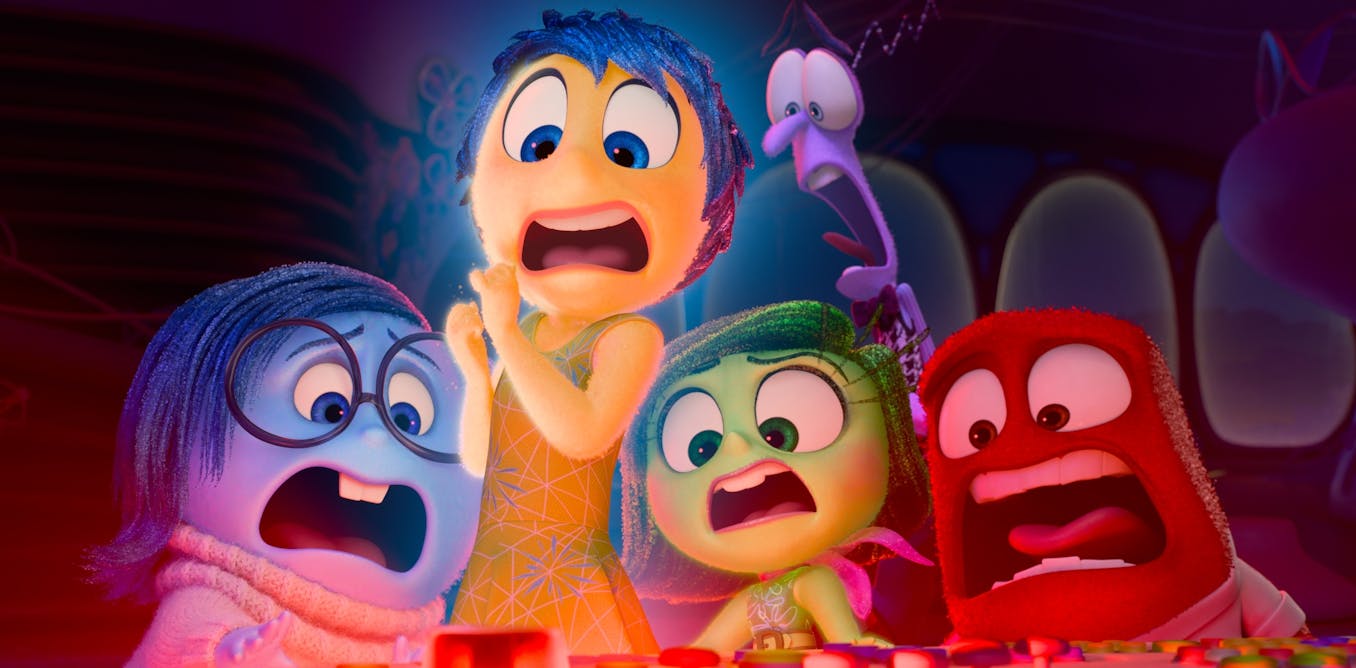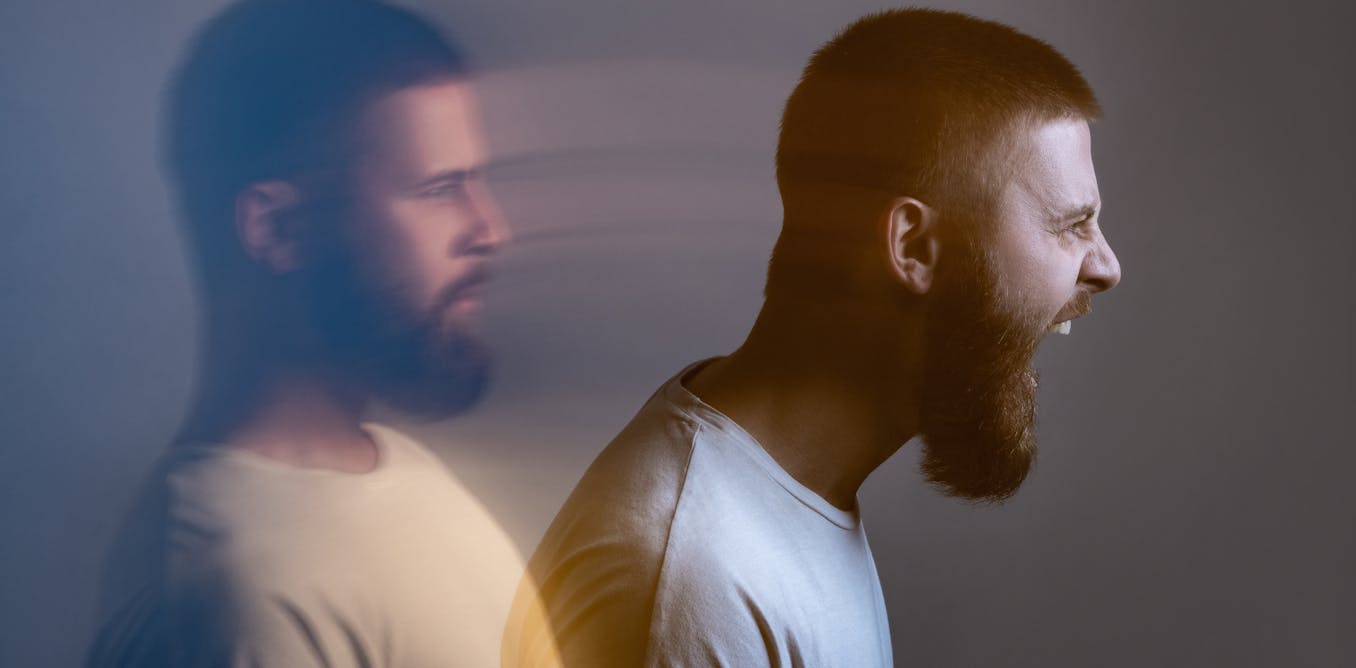When we think of teenagers experiencing anxiety, we’re likely to think about it as a mental health concern. But Inside Out 2 shows that anxiety is a normal feeling and can have a positive purpose – so long as it doesn’t take over.
The film is a sequel to the enormously successful Pixar animation Inside Out (2015), which tells the story of 11-year-old Riley, who has to navigate moving to a new city while her emotions – personified as Joy, Sadness, Anger, Fear and Disgust – struggle to maintain balance within her mind.
In Inside Out 2, we return to Riley’s life in San Francisco, where she has made new best friends and is rocking it on the ice hockey rink. Her core emotions are now a well-functioning team. All is going well. Until the puberty alarm goes off.
As with Inside Out, the sequel has a lot of fun with imagining our internal processes visually. Puberty throws a literal wrecking ball into Riley’s mental headquarters as the builders arrive to do some remodelling. This is a neat way of showing that puberty not only brings psychological, physical and hormonal changes, but also influences brain development.
In the film, this reconstruction makes room for new personified emotions: Anxiety, Embarrassment, Envy and Ennui. In reality, we don’t suddenly develop extra emotions in our teenage years but our emotional experiences are more intense and less stable than in adulthood.
The new emotional characters help Riley to navigate the challenges of teenage life. Most of the story takes place at hockey camp, a microcosm of the adolescent social world. Riley is about to transition to high school where she hopes to become a member of the ice hockey team, the Firehawks. At hockey camp she is torn between her friends from her former school and the desire to impress the older, cooler Firehawks players.
Here, we see how anxiety can play a positive role in our lives. Anxiety takes charge and is shown as a future-looking emotion that helps Riley try to avoid bad consequences.
A big driver for Riley’s anxiety is the fear that she could have no friends in high school. This is a reasonable thing to worry about. Peer relationships become increasingly important in adolescence and teenage experiences of friendship are linked to our wellbeing.
In the world of Inside Out 2, Family Island (which represents Riley’s time with, and love for, her family) is still present, but stands in the shadow of the large and exciting Friendship Island. Riley’s actions are full of typical teenage awkwardness, but Anxiety and the other new emotion characters are working towards meaningful goals.
It is right that we should be worried about the rates of anxiety in young people. Anxiety disorders can develop from early childhood. Generalised anxiety disorder is the most prevalent form among early adolescents.
There is evidence that rates of anxiety in adolescents have been increasing, and that these have long-term impact on a range of outcomes, from school performance to earnings in adulthood.
However, there is a difference between the feeling of anxiety that we see in Inside Out 2 and an anxiety disorder. Having worries is a typical part of growing up, just as it is a typical part of adult life.
As shown in the film, the problem can come when anxiety increasingly takes over. A new concept introduced is the development of the sense of self, made up of strands of beliefs Riley holds about herself which are connected to her memories, such as: “I am a good friend”.
Anxiety decides that Riley’s existing sense of self is no longer fit for purpose and throws it away, causing Joy and the other original emotions to journey into the depths of the mind to rescue it. And if you want to learn what Riley’s deepest, darkest secret is, stay for the post-credits scene.
Courtesy of Disney
As a psychologist I appreciated that Inside Out 2 shows emotion regulation – the ways in which we manage our emotional responses. When anxiety takes over, the core emotions from Inside Out are bottled up and suppressed. Suppression can help us to handle difficult situations, such as Riley holding back tears until she is no longer in front of people.
However, research has found that another strategy, cognitive reappraisal, is linked to better psychological outcomes in adolescents. Reappraisal involves thinking about a situation differently so that you feel a different emotional response, such as seeing a challenge as an opportunity instead.
The old and new emotions must figure out how to work together, arguably reappraising the situation. Joy learns to see the arrival of the new emotional characters differently and recognise that Riley’s sense of self needs to evolve and be made up of all of her emotional experiences and memories. Anxiety can play a useful role, so long as it doesn’t become overwhelming.
The story arc was at times reminiscent of Joy learning to appreciate the role of Sadness in Inside Out, but the plot and added psychological complexity are interesting enough that the sequel still feels fresh.

The post “this fresh sequel shows teenage anxiety is not always a bad thing” by Alana James, Associate Professor of Psychology, University of Reading was published on 06/13/2024 by theconversation.com



































